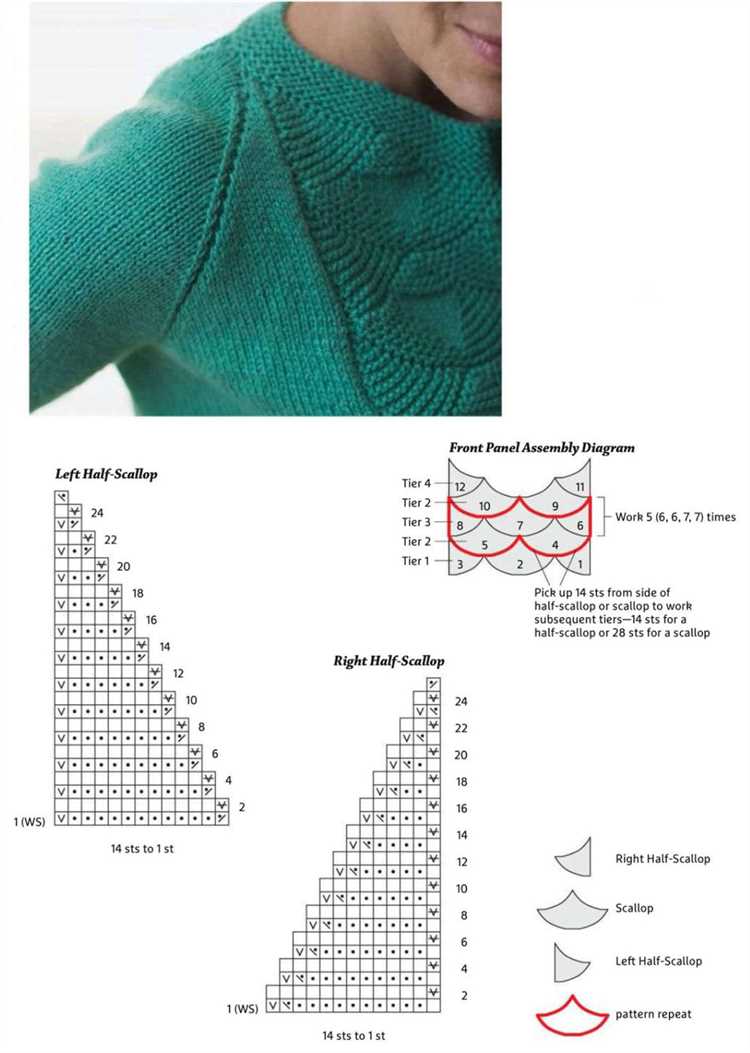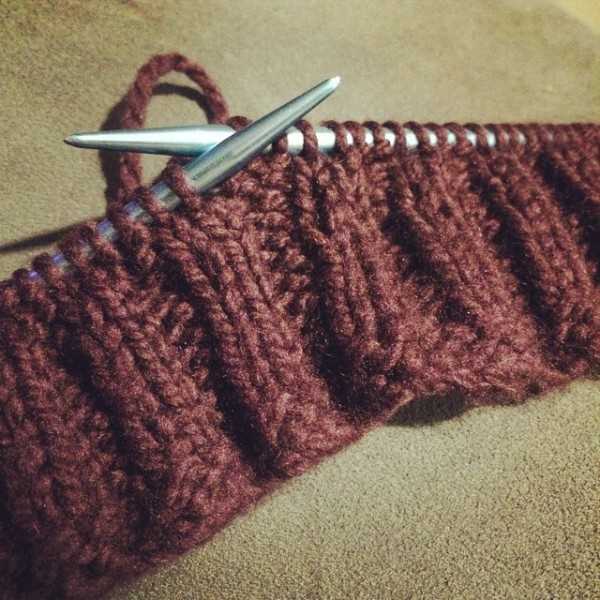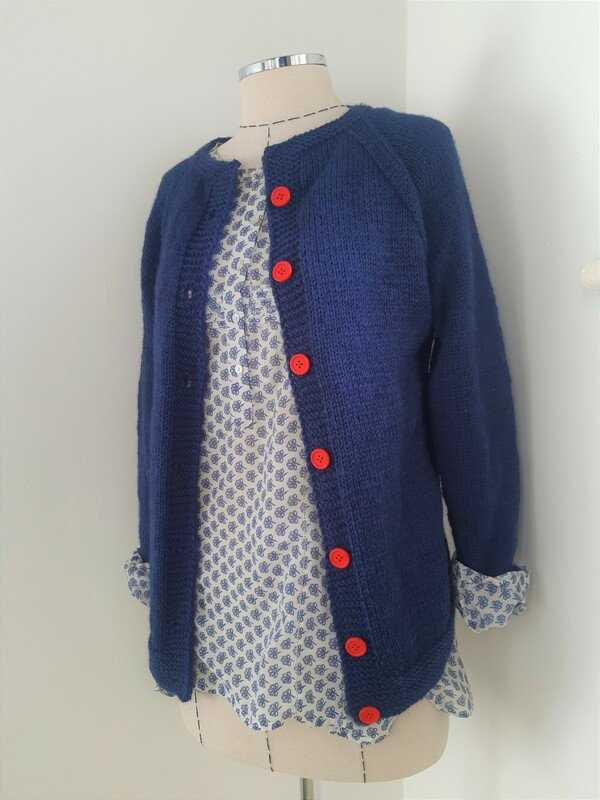Raglan knitting is a popular technique among knitters that creates unique and stylish sweaters, cardigans, and tops. Named after the 1st Baron Raglan, who popularized the style in the 19th century, raglan knitting involves seamless construction and a distinctive diagonal seam that runs from the underarm to the neckline.
One of the main benefits of raglan knitting is the ease and comfort it provides. Since the garment is constructed in one piece, there are no seams to sew together, making it a great project for knitters of all skill levels. The diagonal seam also allows for increased flexibility and movement in the sleeves, making the finished garment more comfortable to wear.
In addition to its practicality, raglan knitting offers endless design possibilities. The diagonal seam creates a natural line that can be used to create interesting patterns and color combinations. Knitters can experiment with different stitch patterns, colors, and textures to create unique and eye-catching garments.
“Raglan knitting is not only practical and comfortable, but it also allows for endless creativity and customization,” says Jane Smith, a seasoned knitter. “I love how the diagonal seam adds a touch of elegance to my garments.”
In summary, raglan knitting is a versatile technique that offers both practicality and style. Whether you’re a beginner or an experienced knitter, raglan knitting provides a seamless and comfortable way to create beautiful and customized garments. So grab your knitting needles and embark on your raglan knitting journey!
What is Raglan Knitting?
Raglan knitting is a technique in knitting where diagonal lines, known as raglan seams, create a seamless transition from the neckline to the sleeves of a garment. This method allows for a comfortable fit and a flattering shape. Raglan knitting is named after Lord Raglan, a British general who popularized this style in the 1850s.
In traditional raglan construction, the sleeves and body of the garment are knitted in one piece from the top down. This means that the raglan seams, which connect the sleeves to the body, are created as the knitting progresses. Alternatively, raglan sleeves can also be knitted separately and then attached to the body using seaming or picking up stitches.
The distinctive feature of raglan knitting is the diagonal seam lines that extend from the neckline to the underarm. These seams typically slope at a 45-degree angle from the shoulder to the underarm, creating a triangular shape. The seamless construction of raglan knitting eliminates the need for sewing or seaming at the shoulder, resulting in a more comfortable and easy-to-wear garment.
Raglan knitting is commonly used in sweaters, cardigans, and other garments that require a fitted or tailored look. This construction method allows for customization and adjustment of the sleeve length and overall garment length. It also provides flexibility in terms of stitch patterns and design elements that can be incorporated into the raglan seams.
Overall, raglan knitting is a versatile technique that creates garments with a flattering fit and a seamless construction. Whether you are a beginner or an experienced knitter, incorporating raglan sleeves into your projects can add a touch of elegance and style.
The History of Raglan Knitting
Raglan knitting is a popular technique in knitting that creates a seamless garment with diagonal lines running from the underarm to the neckline. This technique is named after Lord Raglan, who was a British nobleman and commander during the Crimean War in the mid-19th century.
Lord Raglan is often credited with popularizing this knitting technique as he was known for wearing sweaters with this distinct construction. The raglan sleeves allowed for a greater range of motion, making it an ideal choice for military uniforms and outdoor activities.
While Lord Raglan is associated with the technique of raglan knitting, it is important to note that this knitting method has been used for centuries in various cultures around the world. The construction of raglan sleeves can be found in traditional Icelandic sweaters, known as lopapeysa, as well as in Peruvian and Andean textiles.
In the early 20th century, the raglan knitting technique gained popularity among knitters and designers. It became a fashionable choice for sweaters and cardigans as it created a flattering silhouette and added visual interest to the garment.
Today, raglan knitting is still a popular technique used in a wide range of knitting projects. It is often used in sweaters, cardigans, t-shirts, and other garments where a seamless construction and comfortable fit are desired.
With the rise of knitting culture and the availability of modern knitting patterns, raglan knitting has evolved to incorporate different stitch patterns, colorwork, and shaping techniques. Knitters can now experiment with different variations of the raglan construction to create unique and personalized garments.
Benefits of Raglan Knitting
Raglan knitting offers several benefits that make it a popular technique among knitters. Here are some of the advantages:
- Seamless construction: One of the biggest advantages of raglan knitting is that it is worked in one piece, eliminating the need for seams. This not only saves time and effort but also creates a clean and professional finish.
- Comfortable fit: Raglan sleeves create a comfortable and flattering fit, as they follow the natural shape and curves of the shoulders. This allows for greater freedom of movement and makes raglan garments more comfortable to wear.
- Easy customization: Raglan knitting offers great customization options. Since the sleeve and body are knitted together, it is easy to adjust the length of the sleeves or the body to suit your preferences. This makes raglan patterns highly adaptable and customizable.
- Versatility: Raglan knitting can be used to create a wide range of garments, from sweaters and cardigans to dresses and tops. The seamless construction and comfortable fit make raglan garments suitable for various occasions and seasons.
- Efficient use of yarn: Raglan knitting is known for its efficient use of yarn. By incorporating decreases and increases in the raglan shaping, it reduces yarn wastage and maximizes the use of the available yarn. This can be especially beneficial when working with limited yarn quantities or expensive yarns.
Overall, raglan knitting is a versatile and practical technique that offers a seamless construction, comfortable fit, easy customization, and efficient use of yarn. Whether you are a beginner or an experienced knitter, raglan patterns are worth exploring for their numerous benefits.
Popular Raglan Knitting Techniques
Raglan knitting is a popular technique used to construct seamless sweaters and other garments that have a diagonal seam running from the underarm to the collar. Here are some popular raglan knitting techniques:
- Top-Down Raglan: This technique starts from the neckline and is worked down towards the underarms and sleeves. It creates a seamless garment with shaping that follows the natural contours of the body.
- Bottom-Up Raglan: In this technique, the garment is knit from the hem or bottom edge of the sweater, working towards the neckline. The raglan shaping is created by increasing stitches along diagonal lines.
- Raglan Sleeve Shaping: Raglan sleeves are created by decreasing stitches at regular intervals along the raglan lines to create a sloping shoulder line. This gives the garment a more tailored and flattering fit.
- Short Row Shaping: Short rows are often used in raglan knitting to shape the neckline and back of the sweater. They are worked in sections, allowing for greater customization and fit.
- Colorwork Raglan: Raglan sweaters can be enhanced with colorwork techniques, such as Fair Isle or stranded knitting, to create stunning geometric or pictorial designs along the raglan lines.
- Circular Raglan: Circular knitting is commonly used in raglan construction to eliminate the need for seams. This technique is especially popular for knitting in the round.
These popular raglan knitting techniques offer endless possibilities for creating beautiful, comfortable, and stylish garments. Whether you’re a beginner or an experienced knitter, exploring raglan knitting can add a new dimension to your knitting skills.
Materials for Raglan Knitting
- Yarn: Choose a yarn that suits your project and personal preferences. It can be any type of yarn, such as wool, acrylic, or a blend. Select a weight of yarn that matches the desired gauge for your pattern.
- Knitting Needles: You will need a set of circular or straight knitting needles in the appropriate size for your chosen yarn. The needle size will depend on the gauge specified in your pattern.
- Stitch Markers: Stitch markers are essential for keeping track of the different sections of your raglan sweater. They help mark the raglan seamlines and separate the body and sleeve stitches.
- Tapestry Needle: A tapestry needle is necessary for weaving in loose ends and sewing any seams or finishing touches on your raglan sweater.
- Scissors: A pair of sharp scissors is essential for cutting yarn and trimming any excess or unwanted threads.
Choosing a Raglan Knitting Pattern
When it comes to choosing a raglan knitting pattern, there are a few things to consider. Raglan sweaters can come in a variety of styles and designs, so you’ll want to find one that suits your taste and skill level.
Here are some factors to consider when choosing a raglan knitting pattern:
- Skill Level: Make sure to choose a pattern that matches your skill level. Some patterns may be more advanced and require knowledge of complex stitch patterns or techniques.
- Sweater Style: Raglan sweaters can be classic and simple or have intricate stitch patterns and designs. Decide on the style you prefer and look for patterns that match your vision.
- Gauge: Pay attention to the gauge of the pattern. This is important to ensure your finished sweater will have the correct size and fit. Be sure to check your gauge before starting the project.
- Yarn Choice: Consider the yarn recommended in the pattern and choose one that you like and that fits your budget. Keep in mind that different yarns will have different drape and texture, which can affect the look of the finished sweater.
- Sizing: Check the sizing options available in the pattern. Make sure to choose a size that will fit you or the intended recipient correctly. Some patterns may offer multiple size options.
- Construction Method: Raglan sweaters can be knit from the top-down or bottom-up. Decide which method you prefer and look for patterns that follow that construction technique.
Once you’ve considered these factors, you can start looking for a raglan knitting pattern that meets your criteria. There are many sources for patterns, including books, knitting magazines, and online platforms. Take your time to find a pattern that you love and that will challenge you to grow your knitting skills!
Tips for Successful Raglan Knitting
Knitting raglan sleeves can be a challenging but rewarding project. Here are some tips to help you achieve successful results:
- Choose the right yarn: When knitting raglan sleeves, it’s important to choose a yarn that has good stitch definition and drapes well. Look for yarns that are made of natural fibers like wool or cotton.
- Swatch before you start: It’s always a good idea to make a swatch before you start knitting. This will help you determine the right needle size and gauge for your project. Knitting a swatch will ensure that your finished sweater fits properly.
- Follow the pattern: Raglan sweaters usually come with a specific pattern to follow. Make sure you read and understand the pattern before you begin. Pay attention to the instructions for increasing and decreasing stitches in the raglan shaping section.
- Mark your increases: To keep track of your raglan increases, use stitch markers or contrasting yarn to mark the increase points. This will make it easier to count your stitches and keep your shaping symmetrical.
- Keep track of your rows: It can be helpful to use a row counter or keep a tally of your rows as you work on your raglan sleeves. This will help you stay organized and ensure that both sleeves are the same length.
- Block your finished sweater: After you’ve finished knitting your raglan sweater, block it to even out the stitches and help the garment hold its shape. Follow the blocking instructions for your specific yarn to get the best results.
- Practice patience: Raglan knitting can be time-consuming, especially if you’re working on a larger project like a sweater. Practice patience and take breaks when needed. Remember, the end result will be worth the effort!
By following these tips, you’ll be well-prepared to tackle your next raglan knitting project with confidence. Happy knitting!
FAQ:
What is raglan knitting?
Raglan knitting is a method of shaping a sweater or any other garment, where diagonal lines extend from the underarms to the neckline. It creates a seamless design that allows for a comfortable fit and easy movement.
How is raglan knitting different from other types of knitting?
Raglan knitting is different from other types of knitting because it uses diagonal lines to shape the garment, rather than traditional side-to-side or top-down construction. This creates a unique look and fit.
What are the advantages of raglan knitting?
One of the main advantages of raglan knitting is that it creates a seamless design, which means there are no seams to sew together. This makes the knitting process faster and easier, and it also provides a more comfortable fit for the wearer.
Can you explain the process of raglan knitting?
The process of raglan knitting involves increasing or decreasing stitches along diagonal lines to shape the garment. Typically, the increases or decreases are made at the underarms and at the neckline. This creates the distinctive raglan lines and allows for a seamless construction.
What types of garments can be made using raglan knitting?
Raglan knitting can be used to create a variety of garments, including sweaters, cardigans, tops, and dresses. It can also be used for accessories like hats and scarves.
Is raglan knitting suitable for beginners?
Raglan knitting can be a bit more challenging for beginners, as it involves shaping and increasing/decreasing stitches along diagonal lines. However, with some practice and guidance, beginners can certainly learn to knit raglan garments.
Are there any specific knitting techniques or stitches required for raglan knitting?
Raglan knitting can be done using a variety of knitting techniques, including stockinette stitch, garter stitch, or even more complex lace or cable patterns. The specific stitches used will depend on the desired design and pattern for the garment.


